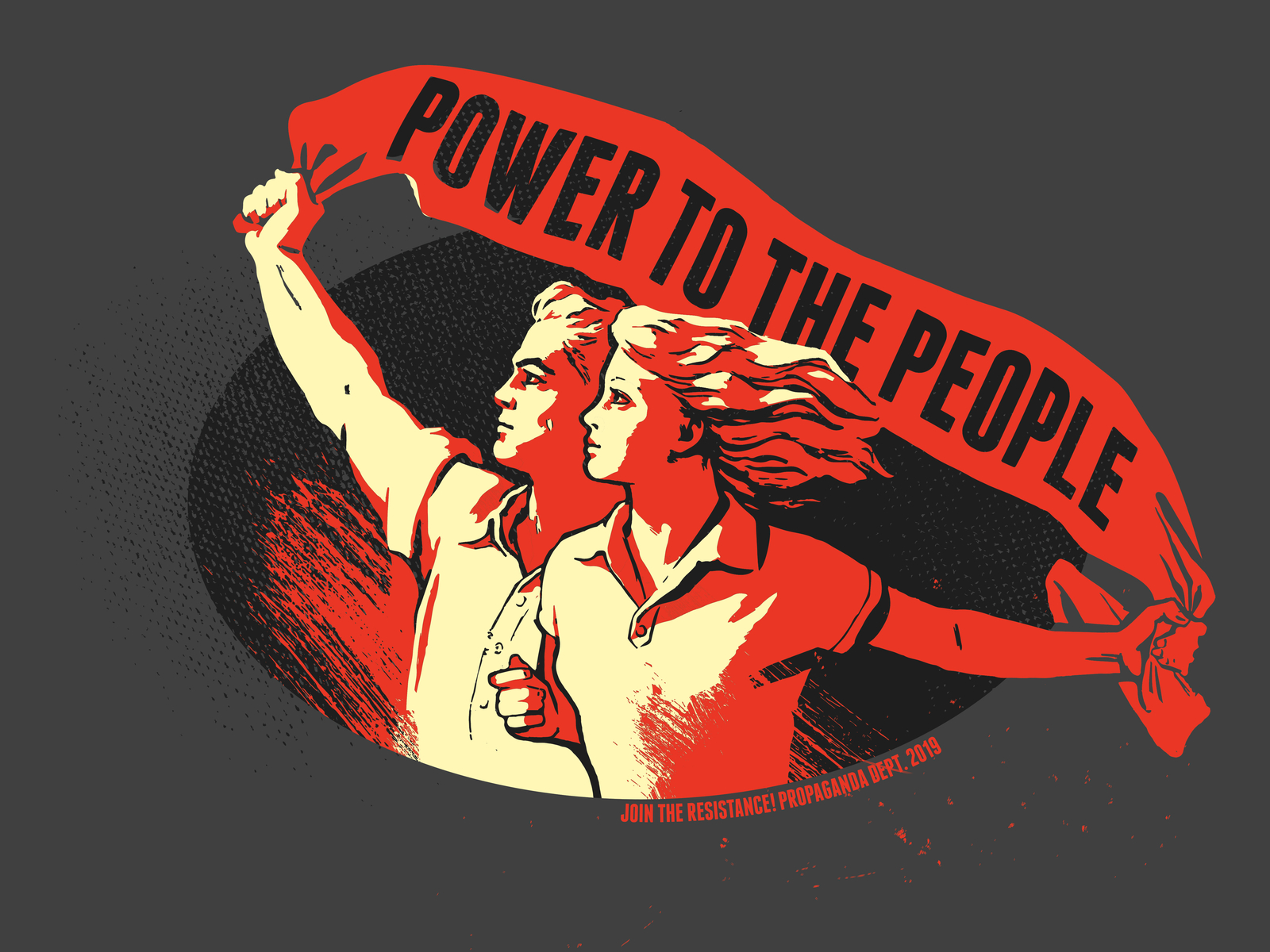

New Communications Technologies Are Powerful Incentives to Violence Technological Optimism and a Boom in Tinkering Powerful Economic Incentives for Diffusion The Predictions of Lethal Empowerment TheoryĬonclusion: Strategy in an Age of Lethal Empowerment
POWER TO THE PEOPLE. FULL
The Perils of Full Artificial Intelligence Terrorist and Insurgent Groups' Lethal UAV ProgramsĬrowd-funded, "Grey Zone," and Private UAV IntelligenceĮveryone Manufactures Everything with 3D PrintingĬhapter 9: An Army of One Launches Many: Autonomy and Artificial Intelligence

These Are Not the Drones You're Looking For State-to-Group Proliferation of UAVs: Hezbollah and Hamas The Pattern of State-to-State Proliferation of UAVs Predators, Reapers, Global Hawk: Sustaining Technologies How Unmanned Aerial Vehicles Extend Private Reach Quality First-Person Filmmaking TechnologyĬhapter 8: Open Innovation of Reach: From AK-47s to Drones, Robots, Smartphones, and 3-D PrintingĬonvergent Technologies and Extended Reach Mobile Streaming Videos and Live-streaming PART THREE: CONVERGENCE: WIDESPREAD LETHAL EMPOWERMENTĬhapter 7: Open Innovation of Mobilization: Social Media and Conquering Digital Terrain The Kalashnikov's Debut and Public Demonstration The Evolution of Firearms and the Introduction of the Machine Gun The International Anarchist Convention of 1881 and 'Propaganda of the Deed'Īnarchist Newspapers and Periodicals WorldwideĬhapter 5: The Kalashnikov and the Global Wave of Insurgencies Innovation Was Not Driven by the Military The Narodnaya Volya and the Killing of the Tsar The Historical Relationship between Political Violence and TechnologyĮverett Rogers' Theory of Commercial Diffusion RevisitedĬhapter 3: Dynamite and the Birth of Modern Terrorism The Historical Relationship between War and TechnologyĬhapter 2: The Arsenal for Anarchy: When and How Violent Individuals and Groups Innovate Introduction: The Age of Lethal EmpowermentĬhapter 1: Classic Models of Military Innovation: Shaped by the Nuclear Revolution Power is flowing to the people, but the same technologies that empower can imperil global security, unless we act strategically.
POWER TO THE PEOPLE. HOW TO
Cronin closes by focusing on how to respond so that we both preserve the benefits of emerging technologies yet reduce the risks. Just as importantly, higher-order functions that previously had been under state military control (mass mobilization, force projection, and systems integration) no longer are. New technologies are transforming access to the means of violence. The twenty-first century "sharing economy" has already disrupted every institution, including the armed forces. That history illuminates our own situation, in which emerging technologies are altering society and redistributing power. When Nobel invented dynamite and Kalashnikov designed the AK-47, each inadvertently spurred terrorist and insurgent movements that killed millions and upended the international system.

Indeed, accessible innovations in destructive force have long driven new patterns of political violence. Over the centuries, the most surprising developments in warfare have occurred because of advances in technologies combined with changes in who can use them. In recent years, states have attempted to stem the flow of such weapons to individuals and non-state groups, but their efforts are failing.Īs Audrey Kurth Cronin explains in Power to the People, what we are seeing now is an exacerbation of an age-old trend. The diffusion of modern technology (robotics, cyber weapons, 3-D printing, autonomous systems, and artificial intelligence) to ordinary people has given them access to weapons of mass violence previously monopolized by the state. Never before have so many possessed the means to be so lethal. Oxford Research Encyclopedias: Global Public Health.
POWER TO THE PEOPLE. SERIES
The European Society of Cardiology Series.Oxford Commentaries on International Law.


 0 kommentar(er)
0 kommentar(er)
